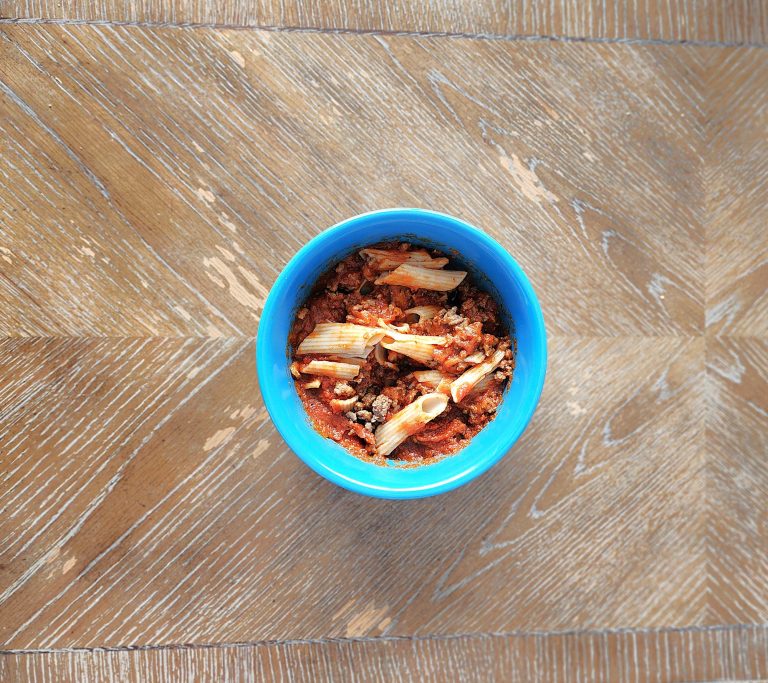AIP Reintroduction Phase
Now we're getting somewhere...!
Here are just a few examples of foods I have Reintroduced. I still strive to find items that are considered "clean", without a lot of additives.
In...tro...duuuucccinnnggggg...the Reintroduction Phase!! Yay! This part of the AIP where you get to start bringing those foods on the "Avoid" list back into your diet. Now, before you load up on the rice and beans and enchiladas or that meatlovers supreme pizza, there are a few guidelines we need to go over first. Trust me, I wish it was as easy as eating a slice of pizza and just hoping you feel great after eating it. If only...
I'll be honest with you. I am still reintroducing foods to my diet, and I have been on this adventure for almost 3 and a half years. I don't say that to scare you or to make you think it's really going to take that long. I have just been on the slower path. Others may reintroduce quite a few foods and get back to their favorite foods in just a few months. This process, really this entire lifestyle change, isn't a One-Size-Fits-All. You can tailor it to your body's needs.
There are a few lists or stages that we can go through to reintroduce foods, starting with the least likely to be aggravating or inflammatory, all the way to the foods that are typically the culprits of most symptoms. It’s best to go into the reintroduction phase with a plan, because it helps limit variables and it helps determine which foods might be helping with healing or causing inflammatory symptoms.
**Sidenote: If you’re new to the AIP, you may have noticed that some material says AIP and some says AIP Core, etc. Within the past year, due to more recent medical research, the Elimination and Reintroduction lists have been altered slightly, and you now have the option of AIP Core Elimination and Reintroduction, or AIP Modified Elimination and Reintroduction.**
Below, you'll find the lists of foods ranging from least inflammatory to most aggravating (Keep in mind that one person's trigger may not be the same as another person's).
Stages of AIP Core Reintroduction of Food
Stage 1
- Egg Yolks (No Whites)
- Includes yolks from chicken, duck, goose, quail, and other eggs.
- Legumes with Edible Pods or Sprouts
- Examples: Green beans, peas, snow peas, sugar snap peas, and runner beans.
- Spices Derived from Fruits and Berries Includes:
- Allspice, star anise, juniper, caraway, cardamom pods, sumac, and various peppercorns (black, green, white, pink).
- Seed-Based Spices
- Options like anise seed, coriander, cumin, dill seed, fennel, mustard, nutmeg, fenugreek, black caraway, and celery seed.
- Nuts, Seeds, and Related Items
- Includes occasional reintroduction of cocoa, chocolate, or coffee.
- Clarified Butter (Ghee)
- Dairy option tolerated by many.
Stage 2
- Nuts and Seeds
- Includes almonds, Brazil nuts, chestnuts, hazelnuts, macadamia nuts, pecans, pine nuts, pistachios, and walnuts.
- Seeds such as chia, flax, hemp, poppy, pumpkin, sesame, and sunflower. Derivatives like flours, oils, butters, and other products (e.g., almond flour).
- Coffee can now be enjoyed daily.
- Whole Eggs (Including Whites)
- Eggs from chicken, duck, goose, quail, and similar sources.
- Dairy Options
- Reintroduce butter and butter oil.
- Alcohol in Moderation
- Gluten-free options such as beer or hard cider (up to 8 oz), wine (up to 5 oz), or distilled spirits (up to 1 oz).
Stage 3
- Nightshades (In Limited Quantities)
- Includes peeled potatoes and paprika.
- Expanded Dairy
- Options Buttermilk, milk, cream cheese, sour cream, and heavy cream. Fermented or A2 dairy products like yogurt, kefir, and curds. Cheese varieties, cottage cheese, and ice cream. Dairy-protein products like whey, whey-protein isolates, and whipping cream.
- Legumes
- Options such as chickpeas (garbanzo beans), lentils, and split peas. Soaking or fermenting legumes may improve tolerability for some.
Stage 4
- Nightshades and Nightshade-Derived Spices
- Includes ashwagandha, bell peppers, cayenne, cape gooseberries (ground cherries), eggplant, garden huckleberries, goji berries, hot peppers (and chili-based spices), naranjillas, pepinos, pimentos, potatoes, tamarillos, tomatillos, and tomatoes.
- Gluten-Free Grains and Grain Alternatives
- Options such as corn, fonio, Job’s tears, kamut, millet, oats, rice, sorghum, spelt, teff, and wild rice. Pseudo-grains like amaranth, buckwheat, and quinoa.
- Legumes
- Includes varieties like adzuki beans, black beans, black-eyed peas, butter beans, calico beans, cannellini beans, fava beans, Great Northern beans, Italian beans, kidney beans, lima beans, mung beans, navy beans, pinto beans, and peanuts.
- Alcohol (Moderate Quantities)
- Options include gluten-free beer or hard cider, wine, fortified wine, liqueurs, and distilled spirits.
Reintroduction Protocol
OKAY, now that we've covered a few paths to reintroducing food, let's go over the protocol for ACTUALLY eating the new(ish) food.
It's best to reintroduce a food when you're in a state of homeostasis, or when you're feeling good mentally, emotionally and physically. Try not to reintroduce a new food when you're stressed or anxious, as these feelings and emotions may play a role in how your body responds to the food. It is also important to track the process. When tracking, include which food was chosen, when it was reintroduced, and any symptoms that were experienced afterwards.
NOTE: If you know you have a SEVERE ALLERGY or a condition that prevents you from eating a certain food, DO NOT attempt to reintroduce that food. Always follow the advice of your medical providers.
- Step 1: Choose a food from the first reintroduction phase. Ensure all other foods in your diet are well-tolerated and were not reintroduced recently.
- Step 2: Create a calm environment. Take deep breaths and allow your body and mind to relax before eating.
- Step 3: Start with a small serving of the selected food as part of your meal. Avoid consuming more of this food for the next 2-3 hours, up to 24 hours.
- Step 4: Monitor your body during this time. If no unusual or adverse symptoms occur (indicating an immediate reaction), proceed to the next step.
- Step 5: Increase to a moderate serving of the same food in a meal. Wait at least 3 days, up to 7 days, before eating it again or introducing another food.
- Step 6: If no delayed symptoms or reactions appear during this period, you can confidently reintroduce this food into your diet. You can then repeat this process with the next food on your reintroduction list.
**This process of reintroducing foods is considered the "gold standard" in the medical field at this time, and is, in fact, considered better and understanding individual food intolerances that a food sensitivity test.**
*A small portion of a spice could be a pinch sprinkled on top of a bite of food; a medium portion of a spice could be a larger pinch sprinkled on a bite or on several bites*
*A small portion of dairy could be a little glob on top of a bite of food; a medium portion of dairy could be a tablespoon used in a serving of food*
*A small portion of nuts night be 4-5; a medium portion of nuts may be a handful*
*A small portion of oats might be 1-2 spoonfuls; a medium portion of oats might be a quarter to a half of a cup*
It's important to note that some foods may not be able to be eaten daily, as too much of this food may cause symptoms, but may be eaten in moderation, without symptoms.
I am this way with tomatoes. I can eat tomatoes with no issues, but when I start to eat tomatoes daily, I start to notice swelling in my hands. Knowing this, I usually eat meals with tomatoes about 1-2 times a week, and keep the tomato portions smaller.
Remember, just because you may have symptoms with a food now, does not mean you always will, and it's very possible to reintroduce the food later in the process, after other similar foods are accepted into the diet.
Tracking the Process
Tracking your symptoms is an important part of this process and helps you understand which foods may cause which symptoms during this phase, that way you know which foods are assisting in healing your body and which may be hindering healing. When tracking, make sure to write:
- The name of the food
- The Date, time a small portion was trialed and reactions
- The Date, time a medium portion was trials and reactions
- Reactions on Day 2
- Reactions on Day 3
- Reactions on Day 4-7
- Whether the reintroduction had positive or negative results
When tracking reactions, it can be difficult to determine what exactly counts as a “reaction”. By the time you have made it through the elimination phase, you should be feeling more in tune with your body and it’s method of communication, and even very slight or subtle cues will become evident. Here is a list of common symptoms you might notice when reintroducing a food back into your diet.
Possible Symptoms During Food Reintroduction
Recurring Symptoms:
- Flare-ups or worsening of autoimmune-related issues.
Challenges with Sleep:
- Struggling to stay awake during the day.
- Difficulty falling or staying asleep.
- Waking up feeling unrefreshed or unrested.
Persistent Cravings:
- Intense desire for sugary foods.
- A noticeable need for fatty foods.
- Reliance on caffeine to stay alert.
- Unusual cravings for non-food items, like dirt, clay, or chalk, which may indicate mineral deficiencies.
Skin and Hair Concerns:
- Rashes, redness, or irritation.
- Breakouts or acne.
- Dry or flaky skin, brittle nails, and lifeless hair.
- Appearance of pink or unusual bumps on the skin.
Body Aches and Discomfort:
- General muscle soreness or stiffness.
- Persistent joint discomfort or pain.
- Tendons feeling sore or achy.
- Ligaments showing signs of strain or tenderness.
Digestive Issues:
- Abdominal discomfort or stomach pain.
- Episodes of diarrhea or constipation.
- Experiencing heartburn or acid reflux.
- Nausea or occasional vomiting.
- Excessive gas or bloating.
- Noticing partially digested food in stool.
Emotional and Mental Health:
- Frequent mood changes or emotional instability.
- Feeling persistently low or experiencing depressive thoughts.
- Struggling to cope with stress or feeling overwhelmed easily.
- A heightened sense of anxiety or unease.
Energy Challenges:
- Consistently low energy or feelings of exhaustion.
- Pronounced fatigue throughout the day.
- A noticeable slump in energy during the afternoon.
Other Symptoms:
- Mild to severe headaches or migraines.
- Dizziness or spells of lightheadedness.
- Persistent mucus, runny nose, or postnasal drip.
- Regular coughing or the urge to clear the throat.
- Itching in the eyes, mouth, or ears.
- Frequent sneezing episodes.
Hopefully this information is helpful, and gets you started on the path to reintroducing some fun and tasty foods! Good luck, enjoy, and remember to appreciate the process! All the hard work is not for nothing. It serves a purpose, and the purpose is to keep you fueled and healthy!
Happy eating!
**Credit to the majority of this information is to Autoimmune Wellness: How to Reintroduce Food on the AIP: The Definitive Guide, one of my favorite resources and references for all things AIP**
We need your consent to load the translations
We use a third-party service to translate the website content that may collect data about your activity. Please review the details in the privacy policy and accept the service to view the translations.








